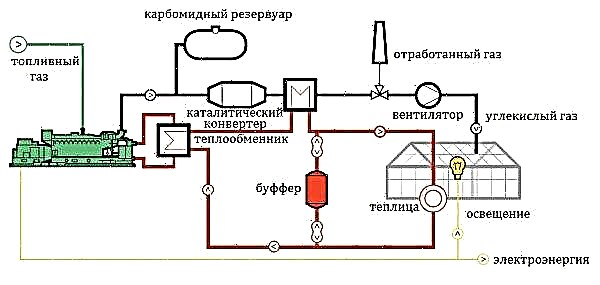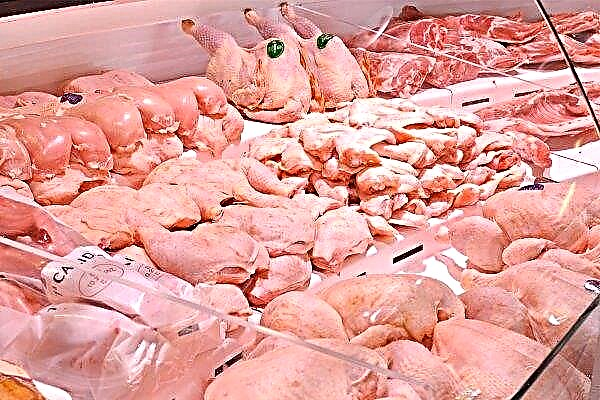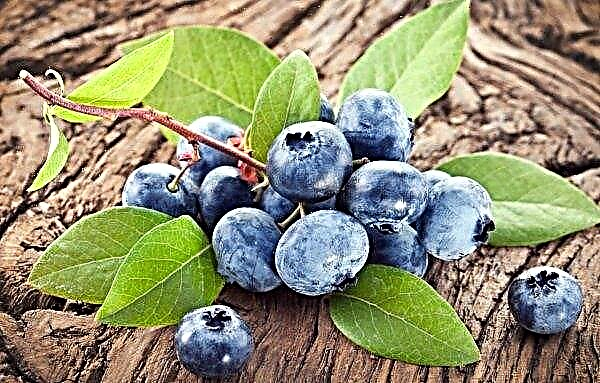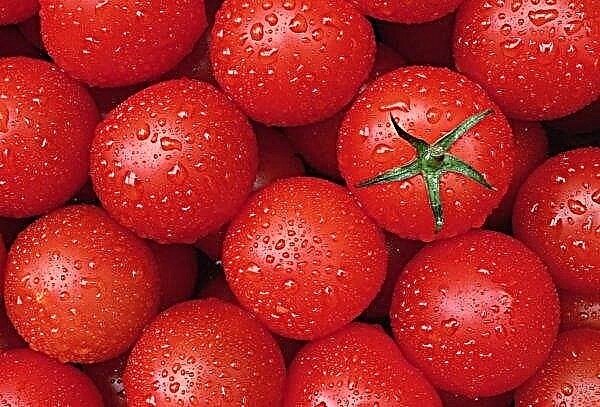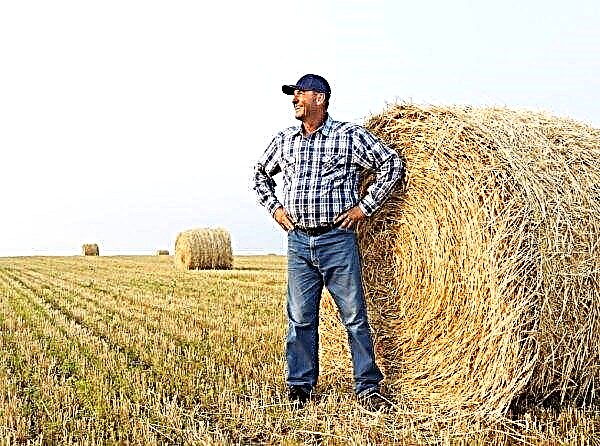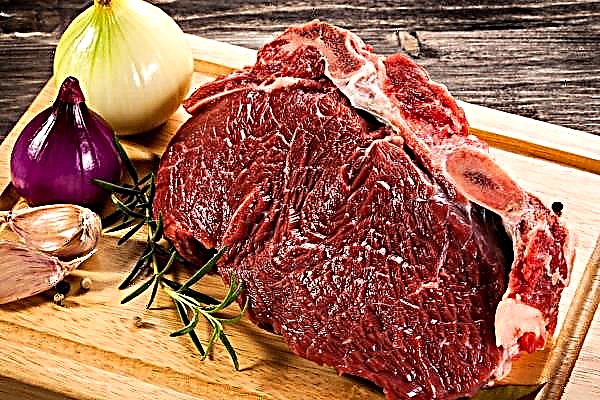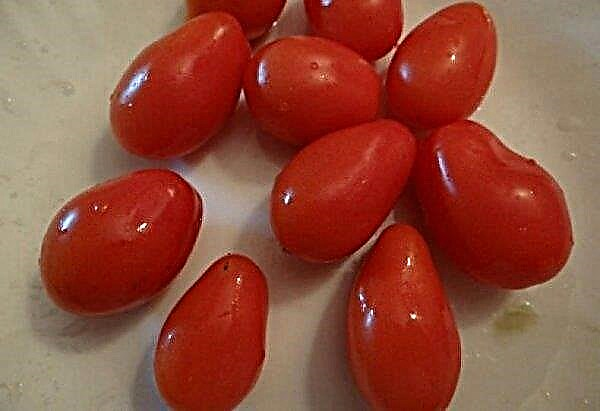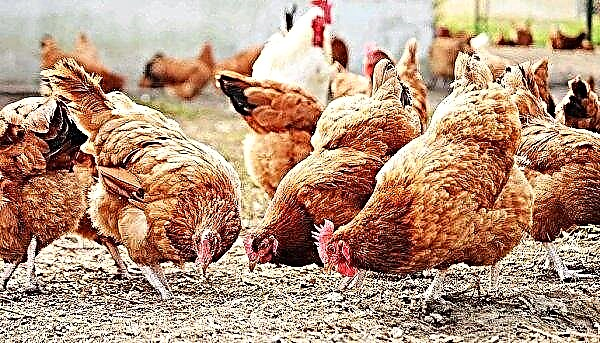Potato is the most popular vegetable crop grown in large and small farms. To date, many varieties of this vegetable crop have been bred, but one of the best is Evolution variety. In this article, we will consider the description of the Evolution potato, the advantages and disadvantages of the variety, the features of its planting and cultivation, as well as methods of combating diseases and pests.
Origin history
The Evolution Potato variety was obtained in 2011. The breeders of the Dutch company Agrico U.A., located near the city of Emmerlord (Netherlands), worked on its breeding. As a result of the work, a new variety of potatoes was obtained, which has the ability to quickly adapt to the conditions of any climate and give a high yield even with minimal care. Since then, the Evolution variety began to spread rapidly throughout the world.
Did you know? In 2000, a potato museum was opened in Denmark. It contains all the existing varieties of this culture and provides information about the history of plant growth.
Description and characteristics of the variety
Plants of this variety in appearance differ little from ordinary potato bushes. Potato Evolution belongs to the table varieties, it is usually grown to get an early harvest of delicious and beautiful tubers.
Consider the main characteristics of the variety:
- The plant reaches a height of up to 70 cm and looks like a sprawling bush on the bed. Under heavy load, erect lateral stems can bend to the ground.
- The foliage is dense, saturated dark green in color. The edge of the sheet plate has a ribbed surface.
- The inflorescences are large, purple, and fall off rather quickly. On one bush, 3-4 inflorescences are usually formed.
- The variety is mid-early, it takes up to 85 days for fruit to ripen.
- The tubers are oval in shape and have a flat surface, they are covered with red or pink skin on the outside. On it are a few eyes.
- The weight of one fruit can reach 150 g. The potato yield from one bush is about 1 kg, and from 1 ha you can collect up to 590 centners of tubers.
- The pulp of the tubers has a yellow color and good taste, does not boil during heat treatment. The amount of starch is about 19%.

Advantages and disadvantages of selection
Potato Evolution has gained popularity thanks to its many positive qualities.
- The main advantages of the variety include:
- high productivity;
- early ripening;
- good taste of the fruit;
- unpretentiousness to climate conditions;
- high starch content in tubers;
- good transportability;
- good immunity to disease.
- The disadvantages of the variety include:
- fast falling of inflorescences;
- the need for watering during drought;
- seed material degenerates, therefore, needs to be updated every 2-3 years;
- susceptibility to late blight of leaves.
Planting potatoes
Even a beginner will be able to plant potatoes of this variety. Tubers germinate well and do not require specific preparation. For a proper planting, it is enough just to complete it at the indicated time, conduct a small preliminary preparation of the soil on the site and observe the necessary distances between the bushes, so that in the future they do not interfere with each other's growth. Consider the features of planting Evolution potatoes in more detail.
Did you know? Potatoes became the first root crop, which was successfully grown in zero gravity. An experiment in the cultivation of tubers was carried out at the American space station Columbia in 1995.
Optimal landing times
Variety Evolution is cold-resistant, so you can plant it in open ground already in the second half of May. At the same time, the temperature of the topsoil in the area should be at least + 8 ° С at a depth of up to 15 cm. The optimum air temperature for planting is at least + 12 ° С.
Soil requirements
Potato Evolution can be successfully grown in any type of soil with a low alkaline content. To plant this variety in too acidic soil is not recommended, as this will adversely affect the root system of plants and significantly reduce fruit yield.
To prepare the soil on the site for planting potatoes, you must perform the following actions:
- remove all last year's plant residues and dig the soil on the site;
- make complex fertilizers containing phosphorus, potassium and magnesium;
- loosening the soil before planting.
Important! The highest yields of Evolution potatoes are achieved when grown in loose sandy soil.
Preparing planting material
Evolution seed tubers are distinguished by the fact that they can sprout quickly in the ground, so you do not need to germinate them before planting.
It is enough to perform such simple steps:
- select for planting even medium-sized tubers up to 7 cm long;
- planting material should not have mechanical damage, rot or growths;
- treat the tubers with a fungicide to protect future plants from bacterial and fungal infections.

Landing technology
Planting Evolution potatoes is almost no different from planting any other variety of this root crop.
A step-by-step algorithm for planting the Evolution variety is described below:
- Dig small holes up to 6 cm deep in the soil. The distance between adjacent recesses should be about 30 cm, and between rows - at least 75 cm.
- Pour a pinch of organic fertilizer into each well - humus or chicken droppings.
- Put a seed tuber on the fertilizer layer in the hole. If there are sprouts on it, then the fruit must be arranged so that they are directed upwards.
- Sprinkle the hole with the planting material with earth and level the surface.
Video: planting potatoes
Care Features
Caring for the planting of potatoes Evolution does not cause the farmer much trouble. The plant does not need to create specific growing conditions. But to get a generous harvest, you need to monitor the condition of the soil around the bushes and, if necessary, irrigate the plants. Let's consider the basic rules for caring for Evolution variety in more detail.
Did you know? The Indians who inhabited the territory of modern Peru were the first to grow potatoes. More than 4000 years ago, they began to cultivate this plant and bred more than a hundred of its varieties.
Fertilizer
If during the preparation of the plot for potatoes and in the process of planting, organic and mineral fertilizers were added to the soil, then repeated feeding of plants is not carried out. Excess fertilizers (especially nitrogen) in the soil can significantly reduce the yield, since all the forces of the plant will go only to the growth of tops. You can additionally scatter wood ash between rows of bushes to prevent the appearance of the Colorado potato beetle.
Weed cleaning
The key to successful potato cultivation is proper soil care around the plants. As a result of this, the bush quickly grows green mass, and after flowering forms beautiful and large tubers.
The list of soil care activities for potato beds is presented below:
- weed weeding - It is especially important in the period from the moment of the appearance of the first shoots to the beginning of flowering. Weeds need to be regularly removed, as they absorb moisture and nutrients from the soil, obscure young potato sprouts, which impedes their growth;
- loosening the soil - it is recommended to carry out after a rain or watering in order to improve air permeability of soil;
- hilling plants - Helps to form a nest of tubers and has a beneficial effect on the state of the root system of plants, prevents the growth of weeds and drying out of the soil. The first time the stems are earthed after they reach a height of 20 cm, and after 2-3 weeks this procedure is repeated;
- mulching potato beds - Helps to keep the soil moist and loose, prevents the appearance of weeds.
Important! Evolution tubers have a high tendency to germinate, so you need to store them in a dark place.
Watering
In temperate regions, the amount of moisture they receive during rains is sufficient for potato shrubs. Additional watering is recommended only during a long period of drought, which is accompanied by high air temperature.
Potato watering rules are listed below:
- For the first time, bushes can be watered only 20 days after the emergence of young shoots.
- The second time the bushes can be watered if necessary before flowering, so that the inflorescences do not crumble from a lack of moisture in the soil.
- During a period of severe drought, potatoes can be watered again in the peak flowering phase.
- The last time the plants can be watered immediately after flowering.
- For watering bushes, drip irrigation systems can be used.
Important! You can not water the plants after flowering has completed and the active formation of tubers has begun - this can provoke late blight.
Pest and Disease Control
Potato Evolution has good immunity and practically does not suffer from scab and late blight of tubers. In addition, plants are rarely attacked by potato nematodes. But sometimes the bushes can suffer from the invasion of the Colorado potato beetle or be ill with late blight of the leaves.
Consider methods of dealing with these problems and possible preventive measures:
- Late blight.The reason for the appearance of a fungal infection is waterlogging in combination with cool weather. Dark spots appear on the leaves of the bushes, which eventually acquire a brown hue or become covered with a white coating. To save the crop, the beds are sprayed with a solution of copper sulfate or Bordeaux liquid. To prevent disease, it is necessary to carry out preventive treatment of seed material before planting and adhere to recommendations for proper planting and watering of plants.
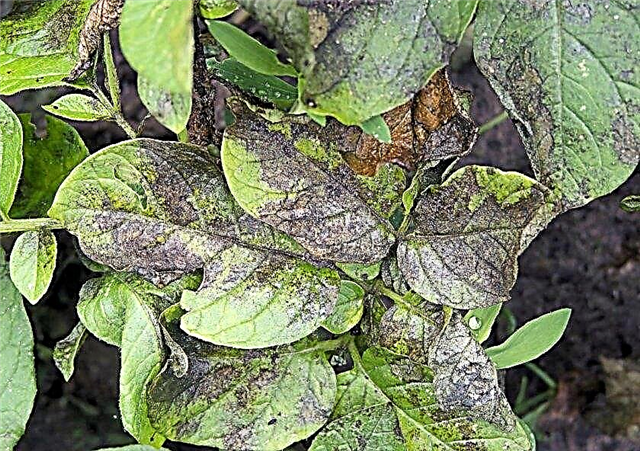
- Colorado beetle. The insect lays eggs on the leaves of the plant, from which pink larvae hatch. They eat the green mass of the plant until the tubers ripen, which leads to loss of crop. Potato bushes need to be inspected periodically and when a small number of beetles or larvae appear, manually collect pests. If there are too many larvae, they spray the beds with special chemical insect repellents.

Harvesting and storage
Harvest potatoes Evolution can be harvested in late August. You can dig up tubers manually or using special equipment.
Key harvesting recommendations are listed below:
- mow the tops 2 weeks before the start of harvesting the tubers;
- it is best to dig out the fruits in dry and warm weather;
- after harvesting, dry the tubers on the street under a canopy for several days;
- sort the fruits by size, separate the seed material and discard spoiled or damaged fruits.
Potatoes Evolution can be stored until the beginning of spring in a cool (no more than +2 ... + 3 ° C) cellar or basement. Under such conditions, the tuber keeping rate is 94%.
Potato Evolution is one of the best varieties that combines unpretentiousness to growing conditions and high yields. Even novice farmers can plant this variety on their plots, since in order to get a good harvest of beautiful tubers it is enough to just follow the simple recommendations listed above.





